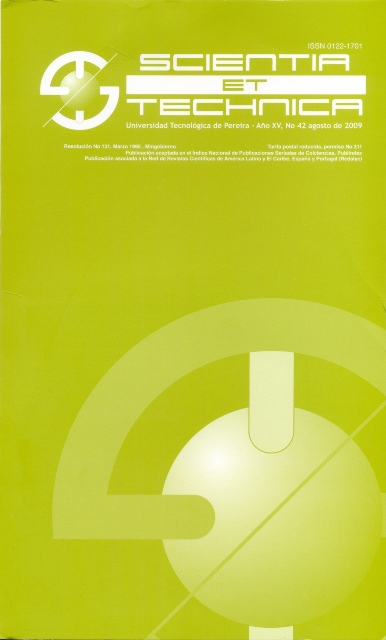Solución al problema de empaquetamiento óptimo bidimensional en rollos infinitos usando un algoritmo híbrido
DOI:
https://doi.org/10.22517/23447214.2667Abstract
En este artículo se presenta un algoritmo para resolver problemas medianos y de gran escala de empaquetamiento óptimo en rollos infinitos. Este consiste en empacar en largos rollos con ancho fijo y longitud ilimitada pequeños rectángulos, sin violar los valores de demanda impuestos. El algoritmo propuesto transforma el problema original (strip packing) en pequeños problemas de empaquetamiento óptimo en contenedores (bin packing). A su vez, éstos son resueltos mediante una técnica metaheurística híbrida, búsqueda en vecindario variable y recocido simulado. La eficiencia del algoritmo propuesto es evaluada usando 34 casos de estudio, de mediano y gran tamaño; los resultados obtenidos son de excelente calidad al ser comparados con los de la literatura especializada.Downloads
Downloads
-
Vistas(Views): 491
- PDF (Español (España)) Descargas(Downloads): 384
Published
How to Cite
Issue
Section
License
Copyrights
The journal is free open access. The papers are published under the Creative Commons Attribution / Attribution-NonCommercial-NoDerivatives 4.0 International - CC BY-NC-ND 4.0 license. For this reason, the author or authors of a manuscript accepted for publication will yield all the economic rights to the Universidad Tecnológica of Pereira free of charge, taking into account the following:
In the event that the submitted manuscript is accepted for publication, the authors must grant permission to the journal, in unlimited time, to reproduce, to edit, distribute, exhibit and publish anywhere, either by means printed, electronic, databases, repositories, optical discs, Internet or any other required medium. In all cases, the journal preserves the obligation to respect, the moral rights of the authors, contained in article 30 of Law 23 of 1982 of the Government Colombian.
The transferors using ASSIGNMENT OF PATRIMONIAL RIGHTS letter declare that all the material that is part of the article is entirely free of copyright. Therefore, the authors are responsible for any litigation or related claim to intellectual property rights. They exonerate of all responsibility to the Universidad Tecnológica of Pereira (publishing entity) and the Scientia et Technica journal. Likewise, the authors accept that the work presented will be distributed in free open access, safeguarding copyright under the Creative Commons Attribution / Recognition-NonCommercial-NoDerivatives 4.0 International - https://creativecommons.org/licenses/by-nc-nd/4.0/deed.es license.



